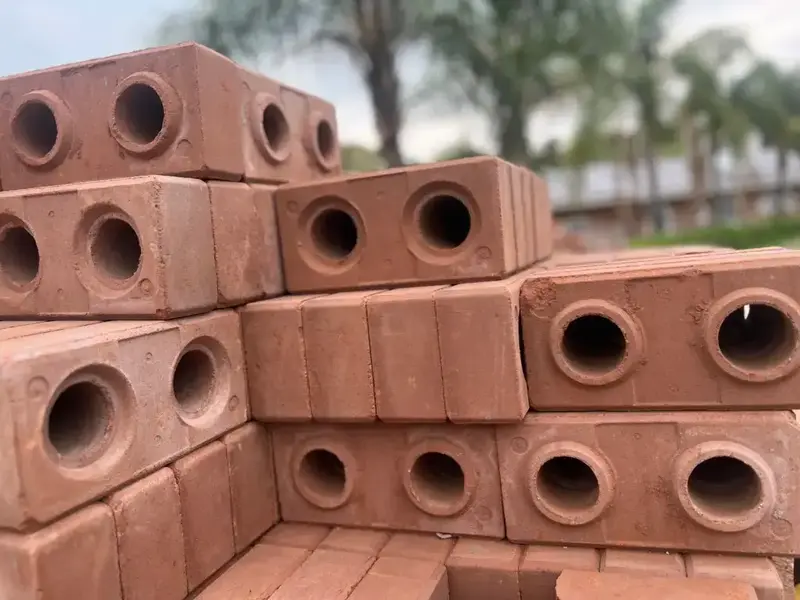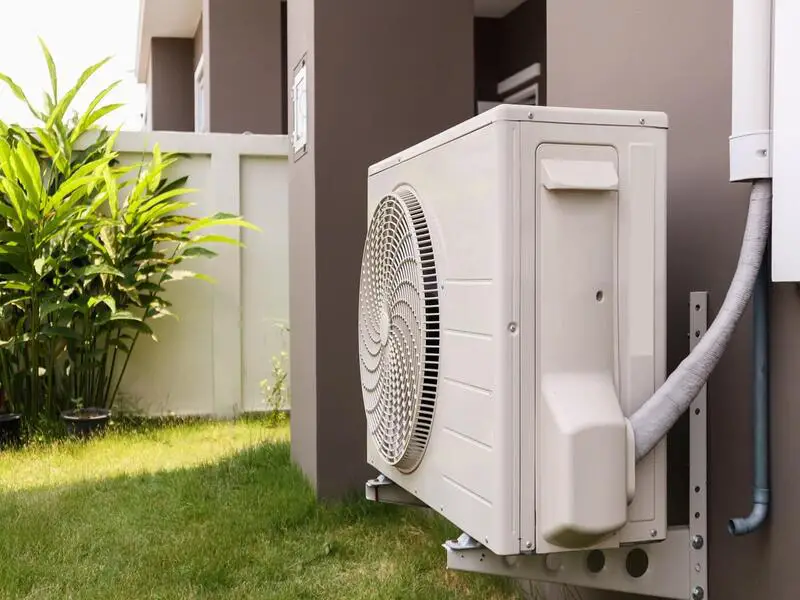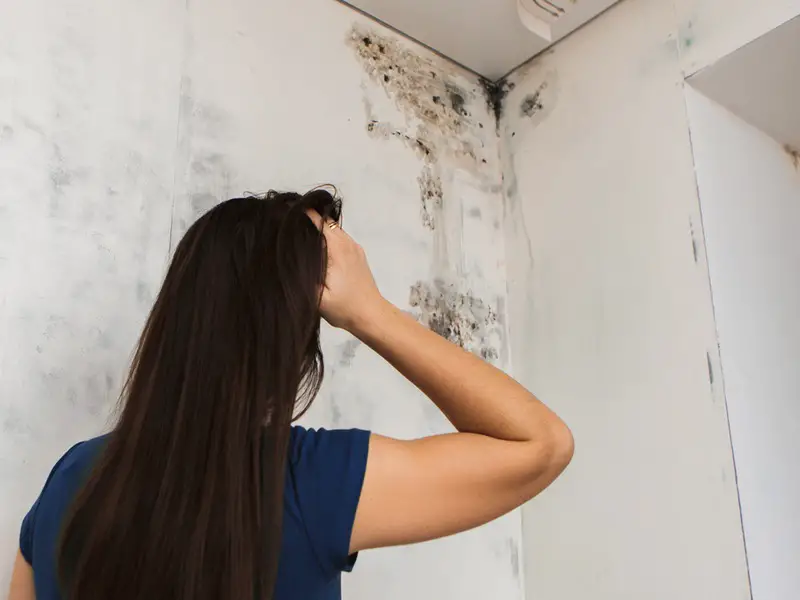As concerns over climate change and environmental protection grow, more people are turning to eco-friendly solutions for their homes and businesses. One such solution is ecological tiles. These tiles are designed to provide both efficiency and sustainability in construction projects. In this article, we’ll take a closer look at what ecological tiles are, how they work, and why they’re becoming increasingly popular.
What Are Ecological Tiles?
Ecological tiles are a type of flooring or wall covering material that is produced using environmentally friendly methods and materials. They are designed to minimize the environmental impact of traditional tiles and offer a more sustainable alternative. These tiles are made from a variety of recycled or natural materials, such as glass, recycled ceramics, and industrial waste. By using recycled materials, they can help reduce the amount of waste that ends up in landfills and save natural resources. They also have a reduced carbon footprint and require less energy to produce than traditional tiles. Ecological tiles can be used in a wide range of applications, including residential and commercial buildings, as well as outdoor spaces such as patios and pool areas.
How Do Ecological Tiles Work?
Ecological tiles work by offering a sustainable solution for various construction and interior design projects. These tiles are manufactured using eco-friendly materials that have a lower environmental impact compared to traditional tiles. The materials used in ecological tiles are often sourced from recycled products or natural resources, and the manufacturing process is designed to be energy-efficient and reduce carbon emissions. This makes them an excellent choice for those who are concerned about the environment and want to reduce their carbon footprint.
The design of ecological tiles also contributes to their effectiveness. For example, some types of ecological tiles come with built-in solar panels that can generate electricity. This technology is known as photovoltaic tiles, and it works by converting sunlight into energy. This type of ecological tile is especially useful for roofs and other areas that receive a lot of sunlight, as they can generate electricity and reduce the building’s energy consumption.

Advantages of Ecological Tiles
Ecological tiles provide a range of benefits over traditional tiles, making them an increasingly popular choice among homeowners and businesses. One of the most significant advantages of ecological tiles is their environmental friendliness. Unlike traditional tiles, which are often made from non-renewable materials such as clay or cement, ecological tiles are produced using recycled or sustainable materials. This not only helps to reduce the amount of waste going to landfills but also helps to conserve natural resources.
In addition, ecological tiles are typically more energy-efficient than traditional tiles. They are designed to be manufactured using less energy and to have a lower carbon footprint than their traditional counterparts. This is especially true for tiles that incorporate solar panels, which can generate electricity and reduce the energy consumption of a building.
Another advantage of ecological tiles is their durability. Due to the use of high-quality materials, ecological tiles are often more durable and long-lasting than traditional tiles. Some types of ecological tiles can even last up to 100 years, making them a cost-effective investment for homeowners and businesses. This also means that fewer tiles need to be produced, reducing the environmental impact of manufacturing and transportation.
Ecological tiles can also contribute to better indoor air quality. Some types of ecological tiles are designed to be hypoallergenic, meaning that they are less likely to cause allergic reactions. They also do not release harmful chemicals, such as volatile organic compounds (VOCs), which can be found in traditional tiles.
Types of Ecological Tiles
There are several types of ecological tiles available on the market, including:
- Glass tiles made from recycled glass
- Ceramic tiles made from recycled ceramics
- Solar tiles that incorporate photovoltaic cells
- Cork tiles made from the bark of cork trees
- Bamboo tiles made from sustainable bamboo
Comparison Between Ecological Tiles and Traditional Tiles
When comparing ecological tiles and traditional tiles, there are several differences to consider. One of the primary differences is the materials used in production. Traditional tiles are often made from non-renewable resources, such as clay or concrete, which have a higher environmental impact compared to the recycled or eco-friendly materials used in ecological tiles.
Another difference between ecological tiles and traditional tiles is their energy efficiency. Ecological tiles are designed to use less energy during production, and some types even incorporate solar panels to generate electricity. On the other hand, traditional tiles are not typically designed with energy efficiency in mind, and the manufacturing process can have a higher carbon footprint.
Cost is another important factor when comparing ecological and traditional tiles. While ecological tiles may have a higher upfront cost, they are often more durable and have a longer lifespan, which can save money in the long run. Traditional tiles, on the other hand, are typically less expensive but may need to be replaced more frequently, leading to higher overall costs.
In terms of design and aesthetics, both ecological and traditional tiles offer a range of options. However, ecological tiles may have more limited options due to the use of recycled or eco-friendly materials. Traditional tiles may have a wider range of design options, including different colors, shapes, and textures.
The Manufacturing Process of Ecological Tiles
The manufacturing process of ecological tiles typically involves a series of steps designed to minimize environmental impact and maximize sustainability. One common process involves using recycled materials, such as glass, ceramics, or industrial waste, to create the tiles. This reduces the amount of waste produced and helps to conserve natural resources.
The first step in manufacturing ecological tiles is to collect and sort the raw materials. The materials are then cleaned and prepared for processing. Next, the materials are ground down to a fine powder or melted down into a liquid form, depending on the type of tile being produced.
In the case of glass tiles, the recycled glass is melted down in a furnace and then poured into a mold to create the desired shape and size. Once the glass has cooled and hardened, the tiles are carefully removed from the mold and polished to give them a smooth and even finish.
Another type of ecological tile is the terrazzo tile, which is made by mixing recycled materials, such as glass or ceramics, with a binder material, such as cement or resin. The mixture is then poured into a mold and allowed to set and harden. The tiles are then polished to reveal the decorative patterns and colors created by the recycled materials.
In some cases, ecological tiles may also incorporate energy-efficient technologies, such as solar panels or geothermal heating systems. These features help to reduce the environmental impact of the manufacturing process and make the tiles even more sustainable.
Overall, the manufacturing process of ecological tiles is designed to minimize waste, conserve resources, and reduce environmental impact. By using recycled and eco-friendly materials and incorporating energy-efficient technologies, ecological tiles offer a sustainable and environmentally responsible alternative to traditional tiles.

Sustainable Production and Supply Chain
Sustainable production and supply chain practices are an important aspect of the ecological tile industry. Many manufacturers recognize the need to reduce their environmental impact throughout the entire production process, from sourcing raw materials to delivering the finished product to customers.
One way that manufacturers can promote sustainability is by using renewable energy sources, such as solar or wind power, to power their production facilities. This helps to reduce greenhouse gas emissions and reliance on non-renewable energy sources.
Another important consideration is waste reduction. Manufacturers can implement practices such as recycling and reusing materials, reducing packaging waste, and implementing closed-loop systems that minimize waste throughout the production process. By doing so, they can reduce their environmental impact and save resources and energy.
The transportation of materials and finished products also contributes to a manufacturer’s environmental footprint. To address this, manufacturers can reduce transportation emissions by sourcing materials from nearby suppliers and using low-emission transportation methods, such as electric or hybrid vehicles.
Furthermore, some manufacturers also consider the sustainability of their supply chain partners. This involves working with suppliers who share a commitment to sustainability and ethical practices. For example, sourcing materials from suppliers who use eco-friendly processes or work with fair labor practices.
By adopting sustainable production and supply chain practices, manufacturers of ecological tiles can reduce their environmental impact and promote sustainability throughout the industry. Additionally, by promoting sustainable practices, they can attract environmentally conscious customers who are looking for products that align with their values.
Installation and Maintenance of Ecological Tiles
Installing and maintaining ecological tiles requires attention to sustainability, just like the manufacturing process. When installing ecological tiles, it’s important to use eco-friendly adhesives and grouts that are non-toxic and low in volatile organic compounds (VOCs). This helps to maintain the sustainability of the project and reduces the amount of harmful chemicals released into the environment.
Maintenance of ecological tiles is similar to traditional tiles. Regular cleaning is necessary to keep the tiles looking their best and to prevent damage. It’s important to use non-toxic and eco-friendly cleaning products that won’t harm the environment or the tiles themselves. Avoid using harsh chemicals, such as bleach or ammonia, which can damage the tiles and release harmful fumes into the air.
Another way to maintain the sustainability of ecological tiles is to repair or replace them as needed. If a tile becomes damaged or breaks, it’s important to replace it with a new ecological tile rather than a traditional tile. This ensures that the sustainability of the project is maintained and that the benefits of ecological tiles are preserved.
Costs of Ecological Tiles
When it comes to the cost of ecological tiles, it’s important to consider both the initial cost and the long-term benefits. While ecological tiles can be more expensive than traditional tiles, they offer numerous advantages that can make them a cost-effective choice in the long run. For example, ecological tiles are often more energy-efficient, which can lead to lower energy bills over time. They are also more durable and longer-lasting, with some tiles boasting a lifespan of up to 100 years.
While the initial cost of ecological tiles may be higher, the long-term benefits can more than make up for it. For example, the energy savings from using ecological tiles can lead to significant cost savings over time. Additionally, the durability of ecological tiles means that they may not need to be replaced as often as traditional tiles, which can also lead to cost savings in the long run.
It’s also worth noting that the cost of ecological tiles can vary depending on the type of tile and the manufacturer. Some manufacturers may offer more affordable options than others, so it’s important to shop around and compare prices.
Eco-Friendly Alternatives to Ecological Tiles
If ecological tiles aren’t a viable option for your project, there are other eco-friendly alternatives to consider. These include:
- Reclaimed wood flooring
- Recycled carpeting
- Natural stone tiles
- Bamboo flooring
- Cork flooring
Ecological Tiles and LEED Certification
Ecological tiles are a great choice for buildings seeking LEED certification. The Leadership in Energy and Environmental Design (LEED) certification is a rating system developed by the U.S. Green Building Council to evaluate the sustainability of buildings. Using ecological tiles can contribute to points in several categories of the rating system, including Materials and Resources, Energy and Atmosphere, and Indoor Environmental Quality.
In the Materials and Resources category, using ecological tiles can contribute to points related to the use of recycled content and locally sourced materials. Many ecological tiles are made from recycled materials and can help a building earn points in this category. Additionally, using locally sourced materials can reduce transportation emissions and contribute to a more sustainable supply chain.
In the Energy and Atmosphere category, using ecological tiles can contribute to points related to energy efficiency. Some types of ecological tiles incorporate solar panels, which can generate electricity and contribute to a building’s overall energy efficiency. Additionally, using eco-friendly adhesives and grouts during installation can help reduce energy usage and contribute to a building’s overall sustainability.
In the Indoor Environmental Quality category, using ecological tiles can contribute to points related to indoor air quality. Many ecological tiles are made from non-toxic materials and are free from harmful chemicals. This can help create a healthier indoor environment for building occupants.
Case Studies: Ecological Tile Applications
Another notable example of ecological tile applications is the “Green Square” project in Mexico City. This project used eco-friendly materials, including ecological tiles, to create a sustainable public space. The tiles were made from recycled plastic waste and were used for the flooring of the square, providing a durable and sustainable option.
In Barcelona, the La Llauna School used ecological tiles made from recycled glass in its renovation project. The tiles were used to create a vibrant and colorful façade that also had a positive impact on the environment. The tiles were chosen for their aesthetic appeal as well as their eco-friendliness.
In the United States, the Durst Organization’s 1133 Avenue of the Americas building in New York City used recycled glass tiles for its lobby walls. The tiles were chosen for their durability and sustainability, as well as their unique aesthetic appeal.
These case studies demonstrate the versatility and practicality of ecological tiles in real-world applications. Whether it’s for commercial, residential, or public spaces, ecological tiles offer a sustainable and durable solution that can contribute to a more environmentally-friendly future.
Conclusion
Ecological tiles offer a sustainable and eco-friendly alternative to traditional tiles. They are made from recycled or eco-friendly materials, and are designed to be energy-efficient and long-lasting. While they can be more expensive than traditional tiles, the long-term benefits can make them a cost-effective choice over time. As concerns over environmental protection and climate change continue to grow, ecological tiles are becoming an increasingly popular choice for both residential and commercial construction projects.




